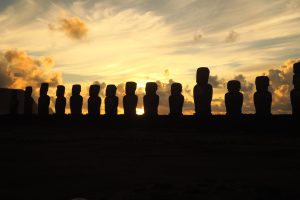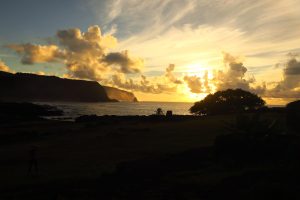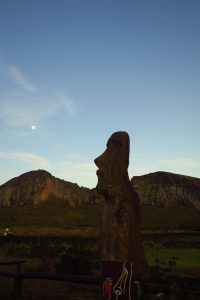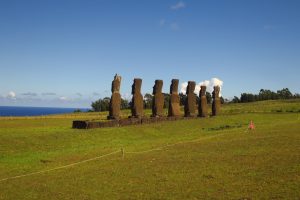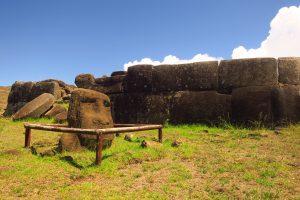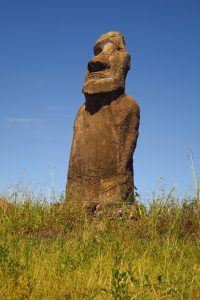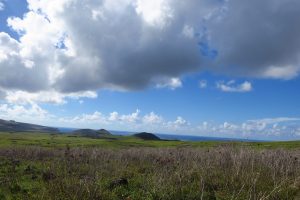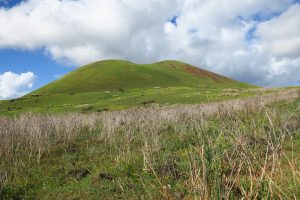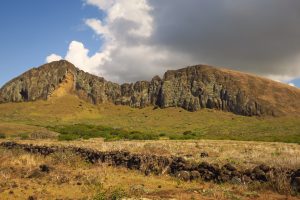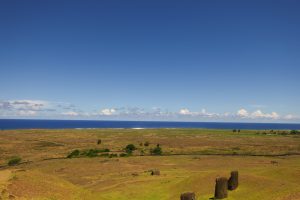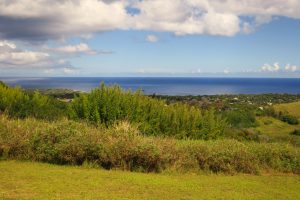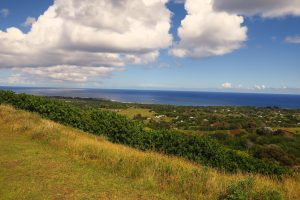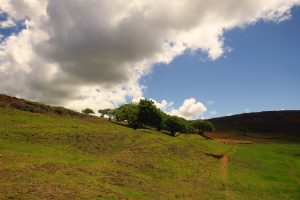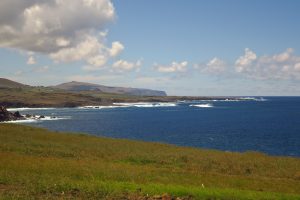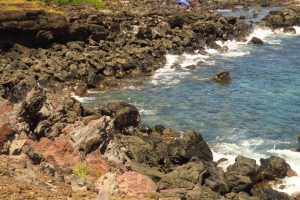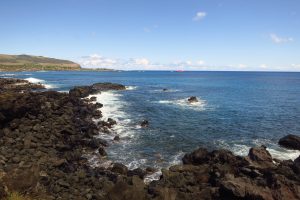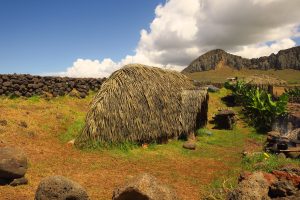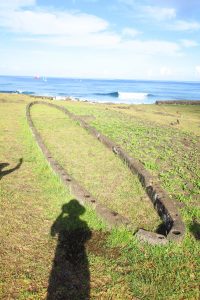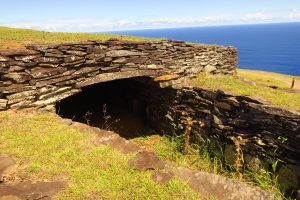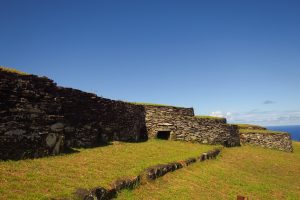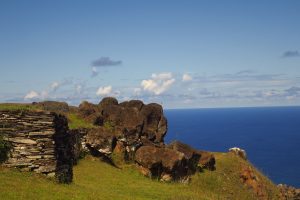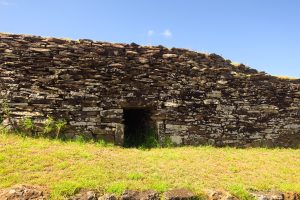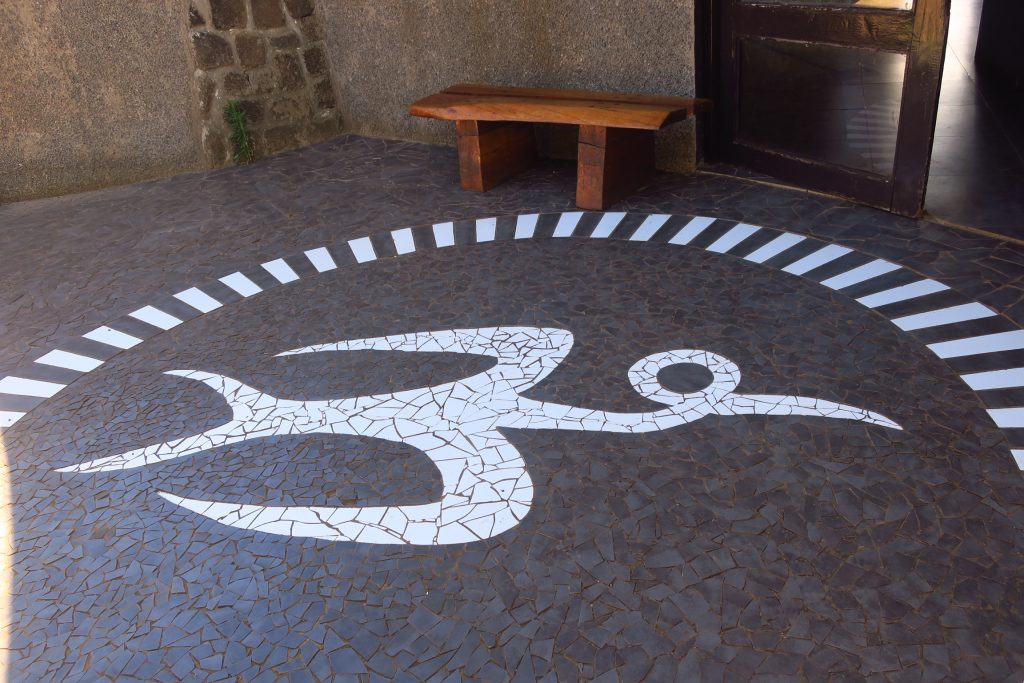We were up early to take pictures of the sun rising over the moai. We set off on our little scooter and after getting lost once or twice ended up at Tongariki, the site with 15 standing moai. There were a lot of people there taking pictures. It was beautiful to see the sun rise behind the moai.
We went back to the hotel and had breakfast before Patricia picked us up. She took us to the local museum and then showed us several more standing moai. Some that where aligned celestially and facing the sea, as a tribute to the orginial polynesians who arrive on Easter Island. Most of the moai face in land so that the isanders could receive the benefit of the moaik’smanu. Here are some pictures.
The island is really beautiful. Here are some pictures I took of the island.
Here is a picture of the typical house hundreds of years ago and one of an original foundation.
By the time of the European arrival in 1722, the island’s population had dropped to 2,000–3,000 from an estimated high of approximately 20,000 just a century earlier. European diseases and Peruvian slave raiding in the 1860s further reduced the Rapa Nui population, to a low of only 111 inhabitants in 1877. Today there are about 9,000 inhabitants living on the island. Virtually all 9,000 people live in Hanga Roa, the main town on the island, because electricity and water are only available in the town.
The name “Easter Island” was given by the island’s first recorded European visitor, the Dutch explorer Jacob Roggeveen, who encountered it on Easter Sunday (5 April) in 1722.
Easter Island was annexed by Chile on 9 September 1888 by Policarpo Toro by means of the “Treaty of Annexation of the Island” (Tratado de Anexión de la isla). Toro, representing the government of Chile, signed with Atamu Tekena, designated “King” by the Roman Catholic missionaries after the paramount chief and his heir had died. According to Patricia, shortly after signing the treaty the Chilean government rented out the island to a company for sheep farming. Until the 1960s the Rapanui were confined to Hanga Roa, the main city. The rest of the island was rented to the Williamson-Balfour Company as a sheep farm until 1953. During this time, the islanders could only work for the company and shop at the company store; they were essentially slaves because they had no other way to earn their livelihood.
That afternoon we learned about the Birdman Cult. After the fall of the Moai carving era society, new Gods replaced the Old ones while there was a struggle for power. In order to settle this in a non-violent manner, the Birdman Cult competition was established to help decide who would lead the Rapa Nui each year.
The process was simple, each year, elders would make a bid for leadership and choose one of their champions to honor the God Make-Make, deity of fertility. What a better way to honor the God of birth than to steal eggs, right?
The chosen ones of the Birdman Cult would then dive down dangerous cliffs of Orongo, a village located meters away from the Volcano Rano Kau. They would then swim to the small inlet named Moto Nui and wait for the first manutara (sooty tern) egg of the season, swimming all the way back to Orongo with the egg safely secure in order to win the crown for his elder, who would then be considered the supreme ruler for one year, until the next competition.
Here is a picture of the volcano.
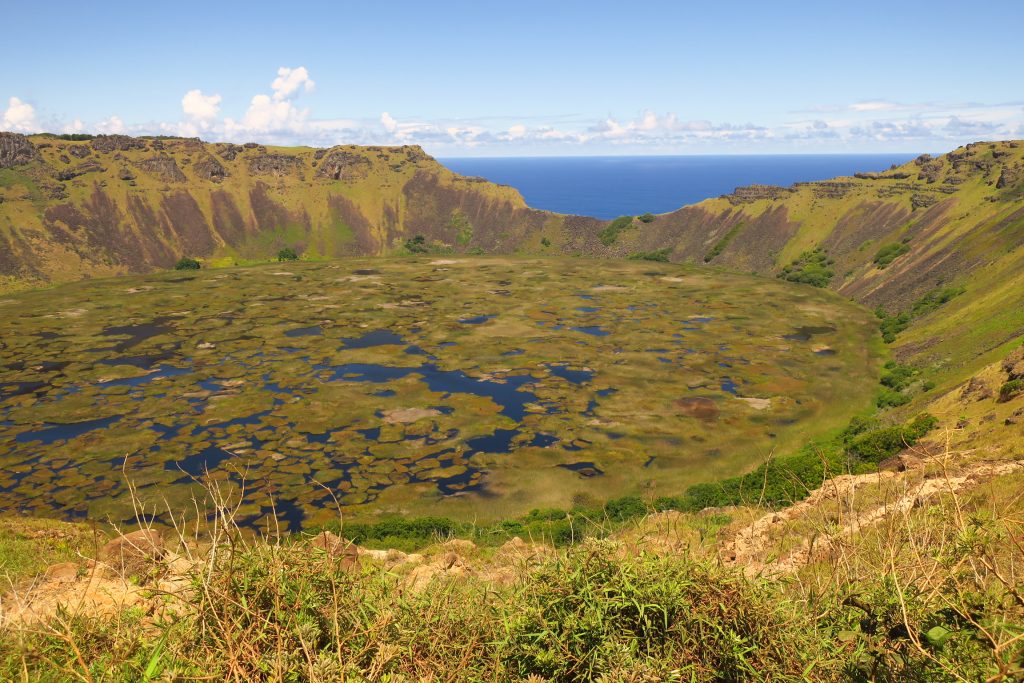
This is a picture of Moto Nui.
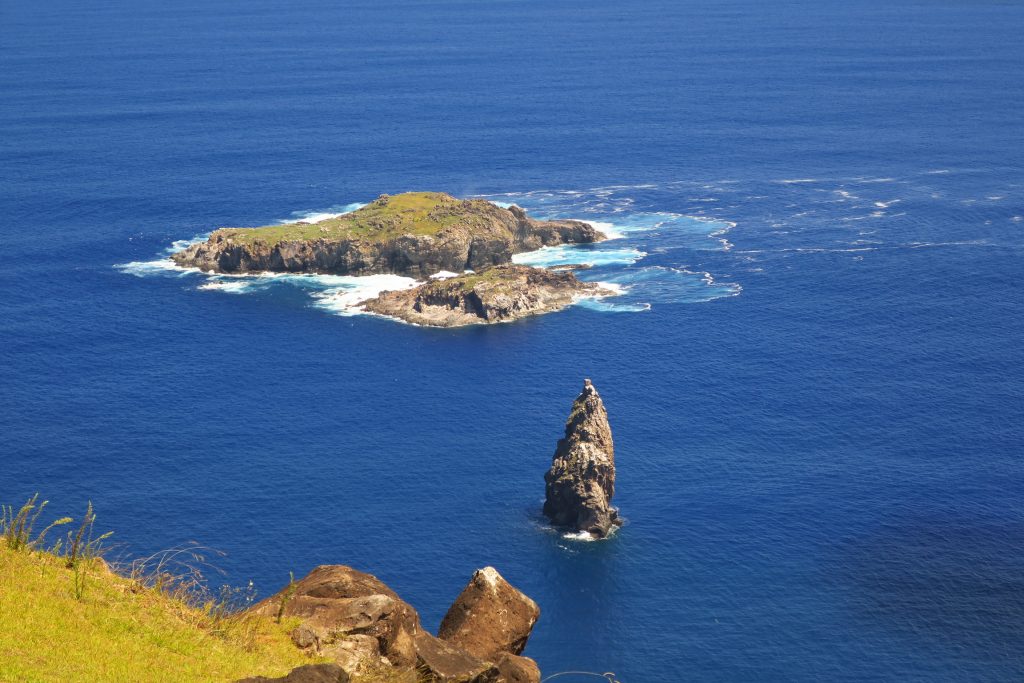
And here are pictures of Orongo, the village where the elders and priests waited to see who won.
This symbol represents the manutara
And this represents the Birdman
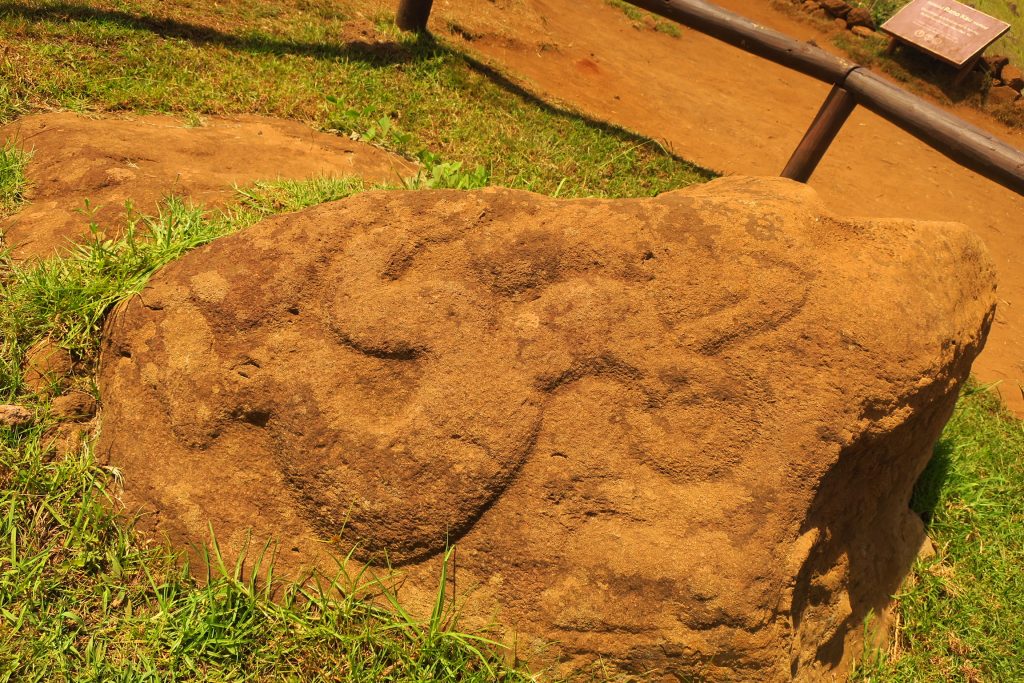
This seems like an odd way to run a society but went on for about 150 years.
Again that evening we went out for a ride before having dinner at a restaurant recommended by Patricia.

